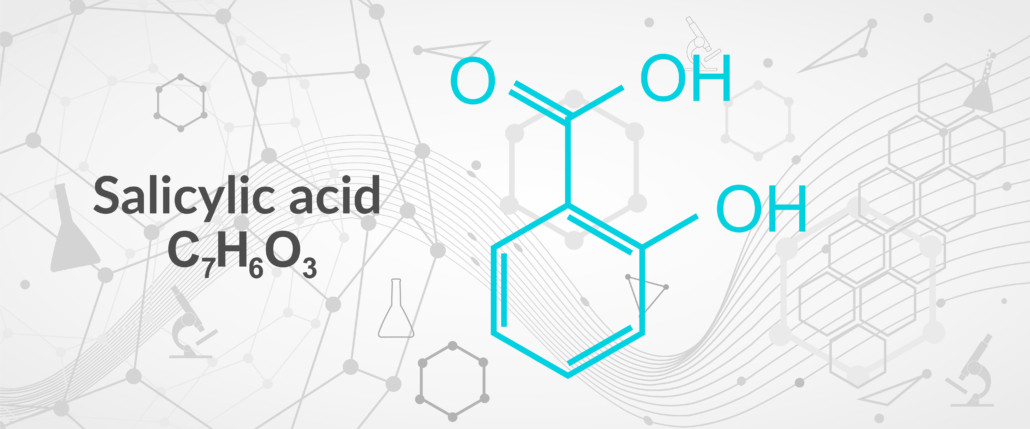We include products in articles we think are useful for our readers. If you buy products or services through links on our website, we may earn a small commission.
Salicylate Sensitivity & Foods High in Salicylates

Dietary choices are a pillar of health and wellness. But what happens when the plant foods we’re told are wholesome are actually loaded with natural compounds that trigger unexpected reactions in our bodies? For many people, salicylate sensitivity is responsible for various adverse side effects.
Salicylates are found in fruits, vegetables, and spices. Sensitivity to these compounds can result in mild discomfort to more severe symptoms that negatively impact quality of life, including hyperactivity and symptoms of Autism Spectrum Disorder in children.
In this article, we’ll explore salicylate sensitivity, including symptoms and side effects, as well as a list of foods high in salicylates. We’ll shed light on this often-overlooked plant compound, empowering you with the knowledge you need to make informed choices for a healthier life.
Table of Contents
What are Salicylates?
Salicylates are natural chemical compounds found in many plant-based foods.
In plants, salicylates play various roles, including as a defense mechanism against pests and protection against environmental stresses such as drought, flood, temperature fluctuation, and microbial attacks. They can be viewed as a naturally occurring pesticide or plant toxin.
Salicylates are found in a wide range of fruits, vegetables, herbs, spices, and nuts. They are particularly concentrated in the outer layers of plants, especially the skin or peels of fruits.
Salicylate is a Phenol
Salicylates are a type of phenol because they include a “phenolic ring” as part of their chemical structure.

This is significant because phenols have the potential to cause various uncomfortable side effects and symptoms.
To break down and excrete phenols, your body uses an enzyme called phenol sulfurtransferase (PST). People with PST deficiency can’t process phenols and salicylates, allowing them to build up, resulting in various sensitivities.
In fact, PST deficiency is linked to the most common biochemical abnormality associated with autism spectrum disorders, known as hyperserotonemia.

Salicylate Sensitivity Symptoms
It’s not clear that all salicylate sensitivities are caused by PST deficiency, but it’s one of the key factors that researchers are exploring.
Salicylate sensitivity symptoms can be difficult to identify because they overlap with symptoms and conditions associated with various other plant toxins. That said, people with salicylate sensitivities can experience one or more of the following adverse effects 9:
Physical Symptoms
- Dark circles under-eyes
- Redness of face and ears
- Hives and eczema
- Diarrhea
- Headache
Allergic respiratory Symptoms
- Runny nose and congestion
- Sinus pressure and infection
- Nasal polyps
- Exacerbation of asthma symptoms
Gastrointestinal Symptoms
- Abdominal pain
- Colitis
- Diarrhea
- Indigestion after eating
- Inflammation
Behavioral Symptoms
- Hyperactivity and stimming
- Mood swings, irritability, or aggression
- Difficulty falling and staying asleep, including sleepwalking
- Inappropriate laughing
- Lethargy
- Aggression and self-harm, including headbanging and other forms of self-injury–mostly in children
It’s important to note that salicylate sensitivity varies from person to person, and some individuals may be more sensitive than others.
The threshold for triggering these side effects can also vary, and a food that causes problems for one person may not affect another. Additionally, the amount and frequency of salicylate consumption can influence the severity of these side effects.
Foods High in Salicylates
Though most people can tolerate salicylates without noticeable symptoms, there is a risk of bioaccumulating salicylates over time when consuming foods high in salicylates.
The highest levels of salicylates are in fruits, vegetables, and spices. Meat, fish, and dairy have essentially no salicylates.
Herbs and paces have the highest concentration per weight. For example, research on curry powder has found it to contain 218 mg per 100 grams.
Compare that to raspberries which have been found to contain 4.4 mg per 100 grams. Remarkably, raspberries are also considered to be a high-salicylate food.
Salicylates in Fruits
| Low 0.1 – 0.25mg | Moderate 0.25 – 0.49mg | High 0.5 -1mg | Very High >1mg |
| Apple Fig Sour cherries Green grapes Lemon Mango Passion fruit Persimmon Pineapple Rhubarb | Kiwi Lychee Loquat Nectarine Pear Plum Watermelon | Granny smith apple Avocado Cherries (sweet) Fig Red grapes Grapefruit Mandarin Mulberry Peach Tangelo | Apricot Blackberries Boysenberries Cantaloupe Cranberry Currants Dates Guava Loganberries Orange Pineapple Plum Prunes Raspberry Strawberries Sultanas |
Salicylates in Vegetables
| Low 0.1 – 0.25mg | Moderate 0.25 – 0.49mg | High 0.5 -1mg | Very High >1mg |
| Asparagus (fresh) Beets Carrots Cauliflower French beans Horseradish Mushrooms Onion White Potato Peas Pumpkin Spinach (frozen) TomatoTurnip | Bok choy Maize Black olives Parsley Parsnip Red Potato Pumpkin Snow peas Sweet corn Sweet potato | Alfalfa Artichoke Broccoli Green chili Cucumber Eggplant Fava beans Okra Spinach (fresh) Squash Sweet potato Tomato Water chestnut Watercress | Green peppers Chicory Courgette Endive Green olives Sweet pepper Radish Zucchini |
Salicylates in Nuts and Seeds
| Low 0.1 – 0.25mg | Moderate 0.25 – 0.49mg | High 0.5 -1mg | Very High >1mg |
| Pecans Peanut butter Sesame seeds Hazelnuts Sunflower seeds | Brazil nuts Pumpkin seeds Walnuts | Pine nuts Macadamia nuts Pistachio nuts | Almonds Peanuts |
Salicylates in Herbs and Spices

| Low 0.1 – 0.25mg | Moderate 0.25 – 0.49mg | High 0.5 -1mg | Very High >1mg |
| Saffron Tandoori spice | Fennel | Allspice Anise seed Cayenne Celery Cinnamon Cumin Curry powder Dill Fenugreek Five spice Garam masala Ginger Honey Jam Mace Mint Mixed Mustard Oregano Paprika Pepper Rosemary Sage Tarragon Turmeric Thyme |
Salicylate Sensitivity Testing and Treatment
To date, there is no specific test for salicylate sensitivity. So if a doctor suspects salicylate and phenol sensitivity, it’s usually addressed with an elimination diet.
An indirect way to assess salicylate sensitivity is to look for high levels of taurine in a urine sample. Excess taurine may indicate difficulty with processing phenols.
If you’re concerned that you may have salicylate sensitivity and want to give an elimination diet a try, here’s a brief protocol.
- Eliminate food with artificial dyes, flavorings, and preservatives.
- Eliminate all fruits, veggies, nuts, and spices that are high in salicylates.
- Eliminate non-food sources of salicylates (Ibuprofen, Aspirin, mint-flavored toothpaste)
- Consume nutrient-dense whole foods, including fresh red meat, seafood, eggs, and full-fat dairy, and healthy animal fats like butter and tallow.
Doctor Kiltz’s own BEBBIIS diet is an easy-to-follow foundation for a nutrient-dense salicylate elimination diet.
Salicylate Sensitivity: The Bottom Line
Salicylates are naturally occurring plant chemicals that protect plants from predators and environmental threats.
They are one of thousands of different plant defense mechanisms that, when ingested by humans, can cause adverse reactions. Salicylates have been implicated in biochemical abnormalities associated with autism.
If you or your doctor suspect salicylate sensitivity, it may be helpful to practice an elimination diet where you remove all foods high in salicylates and replace them with nutrient-dense foods that do not contain salicylates like fresh meats, eggs, and full-fat dairy.





















